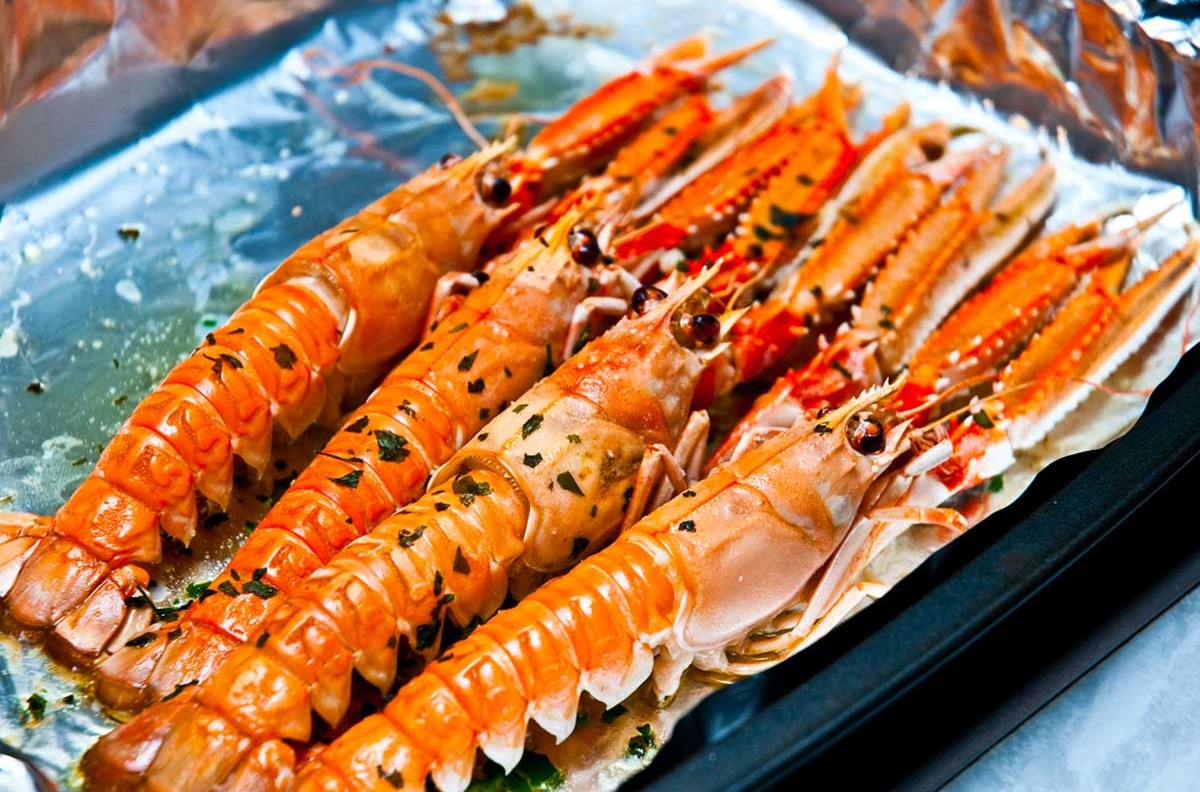
Langoustines are fascinating creatures that often get overshadowed by their more famous crustacean cousins. But what exactly makes these little lobsters so special? Langoustines are small, slender lobsters found in the cold waters of the North Atlantic. Known for their sweet, delicate flavor, they are a prized catch in the culinary world. These crustaceans are not just tasty; they play a crucial role in marine ecosystems. They live in burrows on the seafloor, emerging at night to hunt for food. Their presence indicates a healthy marine environment. Langoustines are also known by several names, including Norway lobster and Dublin Bay prawn. Whether you’re a seafood lover or just curious about marine life, learning about langoustines will give you a deeper appreciation for these incredible creatures.
What is Langoustine?
Langoustine, also known as Norway lobster or Dublin Bay prawn, is a type of crustacean found in the cold waters of the North Atlantic. These creatures are prized for their delicate flavor and are a favorite in many gourmet dishes. Let's dive into some fascinating facts about langoustines.
- Langoustines belong to the Nephropidae family, which also includes lobsters.
- They are smaller than lobsters, typically growing to about 10-20 centimeters in length.
- Langoustines have a slender, orange-pink body with long, thin claws.
- They are primarily found in the northeastern Atlantic Ocean, from Iceland to Portugal.
- These crustaceans prefer muddy seabeds where they can burrow and hide from predators.
Langoustine Habitat and Behavior
Understanding where and how langoustines live can give us a better appreciation of these fascinating creatures.
- Langoustines are nocturnal, meaning they are most active during the night.
- They create burrows in the seabed, which can be up to 30 centimeters deep.
- These burrows provide protection from predators like fish and octopuses.
- Langoustines are solitary creatures, rarely sharing their burrows with others.
- They feed on small fish, worms, and other invertebrates found on the seabed.
Langoustine Reproduction
The reproduction process of langoustines is quite interesting and involves several stages.
- Female langoustines carry their eggs under their tails for about 9 months.
- A single female can carry up to 4,000 eggs at a time.
- The eggs hatch into larvae, which float in the water column for several weeks before settling on the seabed.
- Langoustines reach sexual maturity at around 2-3 years of age.
- They can live up to 10 years in the wild.
Culinary Uses of Langoustine
Langoustines are a delicacy in many parts of the world, especially in European cuisine.
- They are often served grilled, boiled, or baked.
- Langoustine meat is sweet and tender, similar to lobster but more delicate.
- In Italy, they are known as "scampi" and are often served with pasta.
- In Spain, langoustines are a popular ingredient in paella.
- They are also used in soups, stews, and risottos.
Economic Importance of Langoustine
Langoustines play a significant role in the fishing industry, particularly in Europe.
- The UK and Ireland are the largest producers of langoustines.
- They are one of the most valuable seafood exports for these countries.
- Langoustine fishing is regulated to prevent overfishing and ensure sustainability.
- The fishing industry employs thousands of people in coastal communities.
- Langoustines are often sold live, frozen, or as processed products.
Fun Facts about Langoustine
Here are some additional tidbits that make langoustines even more intriguing.
- Langoustines can regenerate lost limbs, a common trait among crustaceans.
Langoustine: A Culinary Gem
Langoustines are more than just a tasty treat. These small, lobster-like crustaceans pack a punch with their sweet, delicate flavor and tender meat. Found in the cold waters of the North Atlantic, they’re a prized catch for seafood lovers. Whether grilled, boiled, or baked, langoustines add a touch of elegance to any dish. They’re also a great source of protein, vitamins, and minerals, making them a healthy choice.
Their unique flavor and texture make them a favorite in gourmet kitchens worldwide. From fancy restaurants to home kitchens, langoustines are a versatile ingredient that can elevate any meal. So next time you’re looking to impress your guests or simply treat yourself, consider adding langoustines to your menu. You won’t be disappointed. Dive into the world of langoustines and discover why they’re considered a true culinary gem.
Was this page helpful?
Our commitment to delivering trustworthy and engaging content is at the heart of what we do. Each fact on our site is contributed by real users like you, bringing a wealth of diverse insights and information. To ensure the highest standards of accuracy and reliability, our dedicated editors meticulously review each submission. This process guarantees that the facts we share are not only fascinating but also credible. Trust in our commitment to quality and authenticity as you explore and learn with us.
